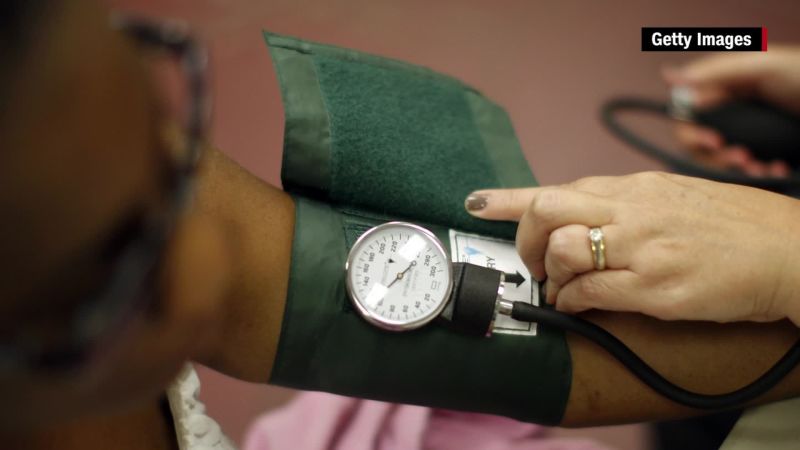About 61% of US adults will have cardiovascular disease by 2050, new research from the American Heart Association predicts. The biggest driver of this trend will be the large number of people who have or will develop high blood pressure, which makes them much more likely to develop dangerous problems like a heart attack or stroke.
Other cardiovascular problems include heart attacks, arrhythmias like atrial fibrillation or a-fib, heart failure and congenital heart disease.
Despite innovations in treatments, heart disease has been the leading killer of Americans for decades, responsible for more than 800,000 deaths every year.
In the research published Tuesday, the association predicts that 45 million adults will have some form of cardiovascular disease – excluding high blood pressure – or will have a stroke in 2050, up from 28 million in 2020.
An aging population will be another force behind these trends, as the older you get, the more likely you are to have heart problems.
By 2050, 22% of the US will be over the age of 65, whereas seniors made up just 13% of the population 10 years ago, studies say. The median age in the US is projected to increase from 37 in 2010 to 41 in 2050, other research shows.
The American population is also becoming more diverse, and communities of color tend to have a disproportionate number of heart problems. By 2050, people who identify as Hispanic will make up about a quarter of the US population, vs. about 20% today, and people who identify as Black will be 14.4% of the country, up from 13.6% today. The number of people who identify as Asian will also increase, from 6.2% of the population to 8.6%, according to US Census predictions.
People who identify as Hispanic are projected to have the greatest population growth for cardiovascular disease or stroke, the new research says.
Black adults now have the highest number of heart disease risk factors like high blood pressure, diabetes and obesity, the association’s research shows. They also are projected to have the most problems with poor diet and an inadequate amount of sleep, both behaviors contribute to heart problems.
The biggest overall increase among cardiovascular conditions will be in the number of people who have a stroke, the American Heart Association predicts, jumping from 3.9% to 6.4%. That would nearly double the number of people who have a stroke from 10 million to 20 million adults between 2020 and 2050.
In terms of risk factors, growing numbers of people with obesity and/or diabetes will also raise the risk of heart problems.
Poor diet, which can hurt heart health, is projected to be the health behavior that will affect the most people. The report suggests that nearly 70 million young adults alone will be eating poorly in 2050.
The new research predicts that the number of people with obesity will increase from 43.1% to 60.6%, affecting more than 180 million people by 2050. The number with diabetes will increase from 16.3% to 26.8% and impact more than 80 million in that period, the report said.
The report also offers a closer look at the heart health of children. It finds “concerning trends” in key risk factors, including a predicted increase in the number of kids living with obesity, in large part due to a lack of exercise and poor diet. The report projects that the number of US children with obesity will jump from 20.6% in 2020 to 33% in 2050, meaning 26 million kids will have obesity by that time.
There’s one positive heart health note, the researchers said: The number of people with high cholesterol is projected to decline. It’s been falling for years, studies show, due in part to the sharp increase in the number of people who take drugs called statins, which can reduce the amount of cholesterol produced in the liver. A 2023 study found that more than 92 million adults in the US – more than a third of the population – took a statin in 2018-19, a 197% increase from 2008-09.
“Clinical and public health interventions are needed to effectively manage, stem, and even reverse these adverse trends,” the researchers wrote.
One significant change they suggest is the creation of clinical and policy interventions specifically to help people of color, who are already disproportionally affected by heart problems and who tend to have less access to basic affordable health care.
Prevention efforts to improve population health would also be important, the researchers said, and would save the US a significant amount of money. The costs of cardiovascular problems – including direct health care costs and productivity losses – are expected to almost triple to more than $1.8 trillion by 2050.





